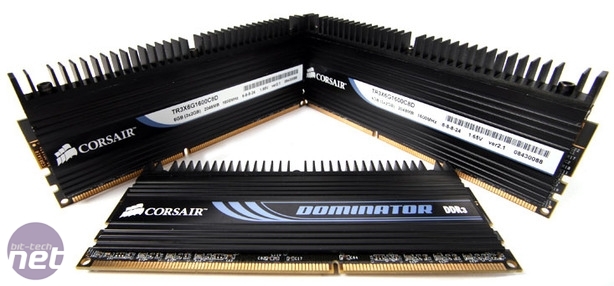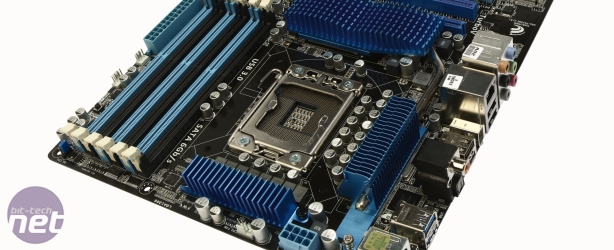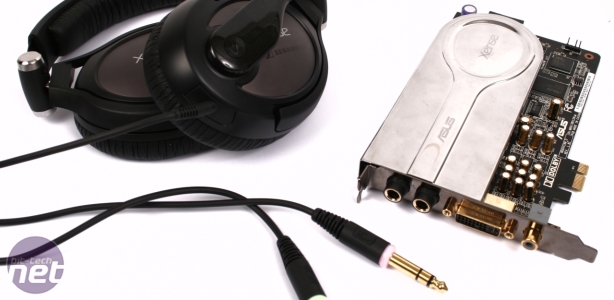PC Hardware Buyer's Guide November 2010
November 3, 2010 | 12:13

Premium Player September 2010
When only the best will do, there’s a great choice of hardware out there to cater for your needs, providing premium performance for a premium price tag. However, even with a high budget, we’re not out to waste money - building a top-end system isn’t as simple as just buying the most expensive components out there and slinging them all together. If you’ve just bought that 24in or 30in monitor, surround sound speaker kit and nice comfy leather chair with footrest (or sub as it's also known) and are looking for some kick-ass performance that won't wait for anyone, this is what we consider the very best hardware at the moment.| Premium Player | |||
| Product | UK Price (inc VAT) | US Price (ex tax) | |
| CPU | 3.06GHz Intel Core i7-950 | £230 | $295 |
| Motherboard | Asus P6X58D-E | £145 | $220 |
| Memory | 6GB 1,600MHz DDR3 | £100 | $120 |
| Graphics Card | Zotac GTX 480 AMP! Edition | £400 | $520 |
| PSU | XFX Black Edition P1-750B-NLG9 | £90 | $130 |
| CPU Cooler | Thermaltake Frio | £40 | $60 |
| Case (UK) | SilverStone FT02R-W | £210 | N/A |
| Case (US) | SilverStone FT02B-W | (£170) | $240 |
| Optical drive | SATA DVD-RW | £15 | $20 |
| Storage (HDD) | 1TB Samsung SpinPoint F3 | £45 | $70 |
| Storage (SSD) | Crucial RealSSD C300 128GB | £210 | $270 |
| Misc | HighPoint Rocket 620 | £45 | $35 |
| Sound Card | Asus Xonar DX | £55 | $80 |
| Overall Price: | £1,585 | $2,060 | |
New This Month
We’ve made some changes to our Premium Player rig this month - we’ll explain why. Firstly, we’ve upgraded the CPU from the Intel Core i7-930 to the Core i7-950. Many of you drew our attention to the fact that the two processors have been priced very closely for a little while now and we've finally got our hands on a sample to test - expect the review soon, but given that it's appeared on this shopping list, you can guess the outcome.
We’ve also replaced the 2GB ATI Radeon HD 5970 with the Zotac GeForce GTX 480 AMP! Edition card. We reviewed this a while back but have been keeping track of its price, as this has slowly been dropping. It now retails for £400 which is £110 less than when we first reviewed it, and £50 less than the HD 5970 2GB that it replaces. Add to this the fact that it’s blisteringly quick and doesn’t have the same driver support needs as the dual-GPU HD 5970 2GB and it looks like a pretty good deal.
The custom cooler also does an effective job of mitigating the well documented heat and noise problems that stock GTX 480 1.5GB cards suffer from, though it is a triple slot affair. Fortunately, the Asus P6X58D-E has more than enough slots to accommodate the Zotac card and still fit the other expansion cards listed in the build.
And The Rest
We’ve picked to seat our i7-950 in the the Asus P6X58D-E but there is also an argument for using the excellent Gigabyte X58A-UD3R. Both boards are excellent and would form the basis of a reliable, quick PC, they’re also identically priced so it really is just a matter of personal choice which you go for. We’ve opted for the Asus board as its lack if IDE port isn’t a problem for a fresh build and we think it looks better.Our premium player PC is housed in the arrestingly beautiful SilverStone FT02R-W which, as a bonus, is also ace at cooling even a monster PC. This is due to a combination of the excellent Air Penetrator fans the case uses and its quirky rotated motherboard tray, a feature which is sure to make your killer PC a talking point. The bad news for US readers is that the special edition, red R-W version we reviewed still isn’t available in North America, so they’re stuck with the equally impressive but less visually distinctive black B-W version for the time being.

When it comes to LGA1366, we’d always prefer 6GB of memory over 3GB if possible, so we’ve gone for 6GB of 1,600MHz DDR3 RAM. The relatively high frequency will give us a bit more headroom when it comes to overclocking. For example, if we wanted to aim for a 4GHz overclock we’d use a QPI of 191MHz (as 191 x 21 = 4,011). If we’d opted for 1,333MHz memory, we’d have to use the 6x memory strap with this QPI, which would give us a memory frequency of 1,146MHz, which is a touch slow. With the 1,600MHz memory, we can safely use the 8x memory strap and have our memory run at a more healthy 1,528MHz. We wouldn’t recommend overclocking 1,333MHz memory to 1,528MHz for everyday use unless you really know your DRAM.
For storage, we’ve gone for a single 1TB Samsung SpinPoint F3 hard disk and a 128GB Crucial C300 SSD. We’ve hooked both of these up to a HighPoint Rocket 620 which allows blistering SATA 6Gbps speeds. We’d install Windows, games and slow-loading applications to the SSD, and everything else to the Samsung hard disk.
We’ve also added an Asus Xonar DX sound card to avoid conflicts with the Realtek audio codec of the motherboard and enhance the sound generally. If you're really into your audio, you might want to consider replacing the Asus Xonar DX with the Asus Xonar Xense Audio Bundle. It's finally on sale and at under £200 it's worth looking considering.
On the PSU side of things our sister mag Custom PC recommends the 750W XFX Black Edition P1-750B-NLG9 which won its Premium Grade award for its price and performance, rather than its name. To quote the review: 'at just over £100, the 750W XFX Black Edition...is great value for money. If you're in the market for a 700-799W PSU then it should be at the top of your shopping list.'.
The CPU cooler we’ve chosen is the Thermaltake Frio which blasted through our thermal benchmarks. With both its fans installed its one of the best cooler we’ve ever seen.
To round things off, there’s a cheap SATA DVD drive. If you haven't got a copy already, you should factor in a copy of Windows 7 - if you're confident that you won't be upgrading much, then an OEM copy should be fine, but serial upgraders need the pricier retail version.

MSI MPG Velox 100R Chassis Review
October 14 2021 | 15:04










Want to comment? Please log in.